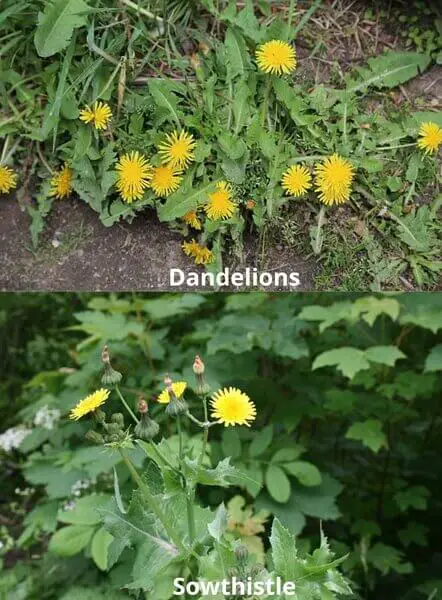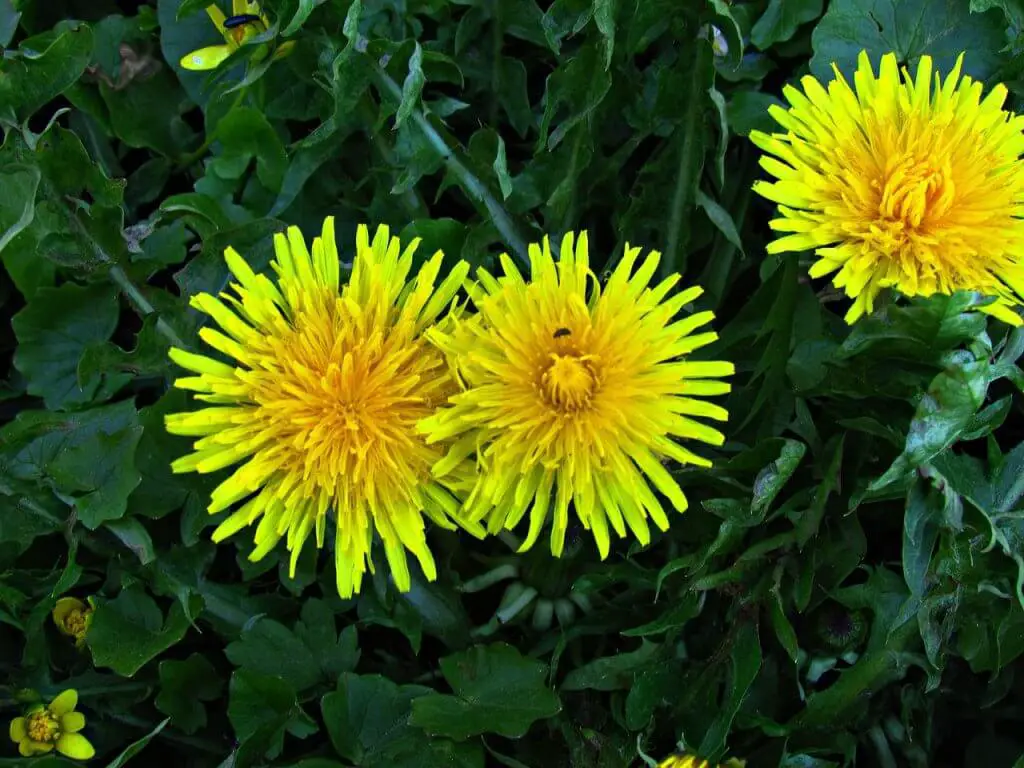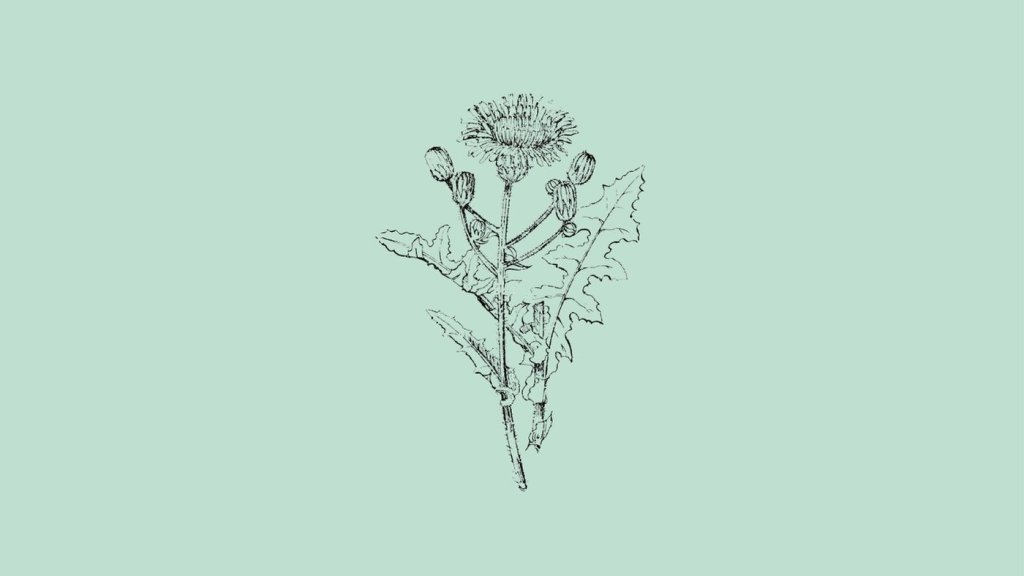Common sowthistle is a winter or summer annual broadleaf plant that grows pretty much everywhere throughout the United States. It is considered a difficult-to-control invasive species... the good news is it is edible.
Common sowthistle plant profile
| Scientific name | Sonchus oleraceus |
| Family name | Asteraceae (sunflower family) |
| Plant type | Annual to perennial herb |
| Kingdom | Plantae |
| Genus | Sonchus |
| Phylum | Vascular plant |
| Habitat | Roadsides, yards, gardens, fields, along streams, wetlands |
| Flower color | Yellow |
| Bloom time | March to September, October or year-round in the south |
Common names include:
- Common sowthistle
- Annual sowthistle
- Common cow thistle
- Hare’s colwort
- Hare’s thistle
- Laiteron
- Milky tassel
- Milk thistle
- Pualele
- Smooth sow thistle
- Soft thistle
- Swines
The common sowthistle has hollow stems that exude latex when damaged. The plant has a short taproot and deeply lobed leaves.
The plant reproduces by reseeding itself. A pappus on the seeds facilitates wind and water dispersal, allowing the plant to spread rapidly.
What Are You Foraging For Right Now?
We're thrilled to hear your ideas. What would you like to submit today? Feel free to share your thoughts and experiences with us.
Sonchus oleraceus is closely related to other members of the Sonchus genus. The pointed auricles and annual or biennial nature of the plant distinguish it from other species.
Is a dandelion a sowthistle?
Dandelion and sowthistle are not the same plants, although they may look similar at first glance due to their bright yellow flowers and spiny green leaves.
The difference is in the number of flowers per head. Dandelion will never have more than one flower per stalk, whereas sowthistle will always have several flowers per stalk.

Where does sonchus oleraceus grow?
In temperate regions, sow thistles are common roadside plants native to Europe, Asia, and tropical Africa and can be found worldwide, including in Australia, North America, and New Zealand.
Sowthistle grows well in cultivated agricultural sites such as field-grown ornamentals, vegetable crops, and gardens.
In addition to disturbed areas along roadsides, riverbanks, and poorly maintained residential areas, it is also found in other disturbed areas.
How to identify sowthistle?
Sowthistle is an annual plant growing 1-4 feet tall with very little branching except near the apex, where the ligulate flowerheads are located. A hairless, dull green stem with a reddish-purple tint is present in the center.
Initially, the alternate leaves are as long as 8 inches and as wide as 2 and 1/4″, becoming smaller and sparser as they ascend the central stem (glabrous).
The leaves (lanceolate, oblong, or ovate in overall shape) are oddly pinnate (pinnatifid) with triangular lobes and soft prickles at the margins. It is more common for the upper leaves to be entire or to have shallow lobes.

Each leaf has a dull green upper surface that is hairless, with a reddish-purple base and glandular bracts. Two pointed basal lobes at the base of the stem extend beyond it.
During the morning, the upper stems terminate in small clusters of flowerheads approximately three feet across when fully opened; these flowerheads close by noon.
Numerous achenes shortly replace each flowerhead of this flora with tufts of fluffy white hairs.
Is sowthistle edible?
Its leaves, flowers, and roots are edible.
The best time to consume these plants is when they are young; the older they become, the more bitter they become.
Their flavor is similar to lettuce when they are young and becomes more similar to Swiss chard as they age.
How to use sowthistle in the kitchen
The herb has been used as a salad and potherb since the days of our earliest ancestors.
- Young plants are mildly bitter and quite succulent; older plants are bitter and tough.
- The leaves and stems can be cooked like vegetables and added to stir-fries and stews.
- Before cooking, the juicy stem should be milked to prevent the juice from turning brown parts of the plant.
Check out the following recipes for buttered sowthistle and stir-fried sowthistle & pork.
Sonchus Oleraceus Nutritional Value
The antioxidant content of sowthistle is four times that of red wine and twelve times that of black tea.
As well as being rich in essential fatty acids, it is also rich in minerals and nutrients like zinc, manganese, copper, iron, calcium, and fiber.
Its high content of vitamins A, B, C, and K supports its traditional use in spring dishes eaten for health and vitality.
Any other uses?
It was believed that smooth sowthistle (S. oleraceus) had similar medicinal properties to dandelion (Taraxacum officinale). Its juicy stem exudes a creamy milky sap similar to that of dandelion, which was used to treat warts in the past.
Sowthistle was also used to hasten childbirth, treat skin and eye problems, and freshen bad breath.
Pillows and mattresses were once filled with its fluffy seeds.
Foraging tips
- Do not confuse prickly old sowthistle leaves with those of wild lettuce (Lactuca).
- Young sow thistles can simply be tossed in the herb pot, while older leaves must be trimmed, representing a culinary departure. Even though old leaves are edible, they are bitter and not that much fun to consume.
- It is better to leave sowthistles alone if you need to trim their spines. With rougher species, it is advisable to use young and tender leaves.
- The best time to harvest them is between 4 and 12 inches in height.
- Pull the plant, including its stalks, as the young stalks peel easily and cooked are excellent.
- You may also want to pull the plant up by the root as the young root is edible when cooked and tends to have a woody taste.
Ana has always been interested in all things nature and flora. With her expertise in home gardening and interest in foraging, she has been spending her weekends and free time looking for edible native plants, flowers, and fungi. One of her many hobbies includes testing new savory and sweet recipes, juices or teas made from freshly picked plants, wild fruits, or mushrooms.

